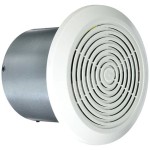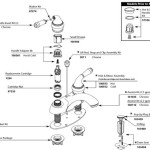How To Stain Bathroom Cabinets
Bathroom cabinets are a great way to add style and storage to your bathroom. If you're looking for a way to update your bathroom without breaking the bank, staining your cabinets is a great option. Staining is a relatively simple process that can be completed in a few hours. Here's a step-by-step guide on how to stain bathroom cabinets:
Step 1: Prepare the cabinets
The first step is to prepare the cabinets for staining. This involves removing all of the hardware, such as knobs, handles, and hinges. You should also remove any doors or drawers from the cabinets.
Once the hardware is removed, you need to clean the cabinets thoroughly. Use a degreaser to remove any dirt, grime, or oil from the surface of the cabinets. Allow the cabinets to dry completely before proceeding.
Step 2: Sand the cabinets
Once the cabinets are clean, you need to sand them lightly. This will help to create a smooth surface for the stain to adhere to. Use a fine-grit sandpaper and sand in the direction of the wood grain.
Step 3: Apply the stain
Now it's time to apply the stain. You can use a brush, a roller, or a sponge to apply the stain. If you're using a brush, make sure to brush in the direction of the wood grain. If you're using a roller, apply the stain in thin, even coats.
Allow the stain to penetrate the wood for the amount of time specified on the can. Once the stain has penetrated, wipe off any excess stain with a clean cloth.
Step 4: Apply a topcoat
Once the stain has dried completely, you need to apply a topcoat. A topcoat will help to protect the stain from wear and tear. You can use a polyurethane, a varnish, or a lacquer as a topcoat.
Apply the topcoat in thin, even coats. Allow each coat to dry completely before applying the next coat.
Step 5: Reassemble the cabinets
Once the topcoat has dried completely, you can reassemble the cabinets. Replace the hardware, doors, and drawers. Your newly stained cabinets are now complete!
Tips for staining bathroom cabinets
- Test the stain on a small, inconspicuous area before applying it to the entire cabinet.
- Use a light touch when sanding the cabinets. You don't want to remove too much of the wood.
- Apply the stain in thin, even coats. This will help to prevent the stain from running or dripping.
- Allow the stain to penetrate the wood for the amount of time specified on the can. This will help to ensure that the stain is absorbed evenly.
- Wipe off any excess stain with a clean cloth. This will help to prevent the stain from becoming too dark.
- Apply a topcoat to protect the stain from wear and tear.

Diy Gel Stain Cabinets No Heavy Sanding Or Stripping Maison De Pax

How To Stain Oak Cabinetry Tutorial The Kim Six Fix

Restaining Bathroom Cabinets With Water Based Wood Stain Roots Wings Furniture Llc

Restaining Bathroom Cabinets With Water Based Wood Stain Roots Wings Furniture Llc

Transforming Bathroom Vanity With Gel Stain Java

Diy Gel Stain Cabinets No Heavy Sanding Or Stripping Maison De Pax

Update Your Bathroom Cabinets For Under 70

How To Use Gel Stain On Cabinets The Good Bad

Refreshing Bathroom Cabinets Using General Finishes Java Gel Stain

Staining And Updating Bathroom Cabinets Persia Lou







